Welcome to Wrexham, Philadelphia and the Welsh language
- Published
Rob McElhenney learns Welsh - and about Mistar Urdd
Rob McElhenney's attempts to learn Welsh provided a highlight of television show Welcome to Wrexham.
But if things had been different, the language may not have been so alien to him - and he might have spoken it in school or even at home.
It was the intention of settlers in parts of his native Philadelphia for the government and people to use Welsh.
However, the attempts in 1681 did not prove as successful as those later in Patagonia, Argentina.
Even so, the map of the area is plastered with Welsh names - Bryn Mawr, Hughes Park, Uwchlan, North Wales, Bala Cynwyd, Haverford, Narberth, Gwynedd Valley and Penllyn.
There's even a St Asaph Church, its design based on the original in Denbighshire, and red dragons adorning police badges.
It's Always Sunny in Philadelphia actor, writer and creator McElhenney started learning Welsh after buying Wrexham AFC with Hollywood star Ryan Reynolds.
But the language was spoken in his hometown on-and-off for four centuries, after two waves of immigration helped shape the state of Pennsylvania.
In fact, the original intention was to call Pennsylvania "New Wales", according to Connor Duffy, who is from Philadelphia and gives presentations on the history.
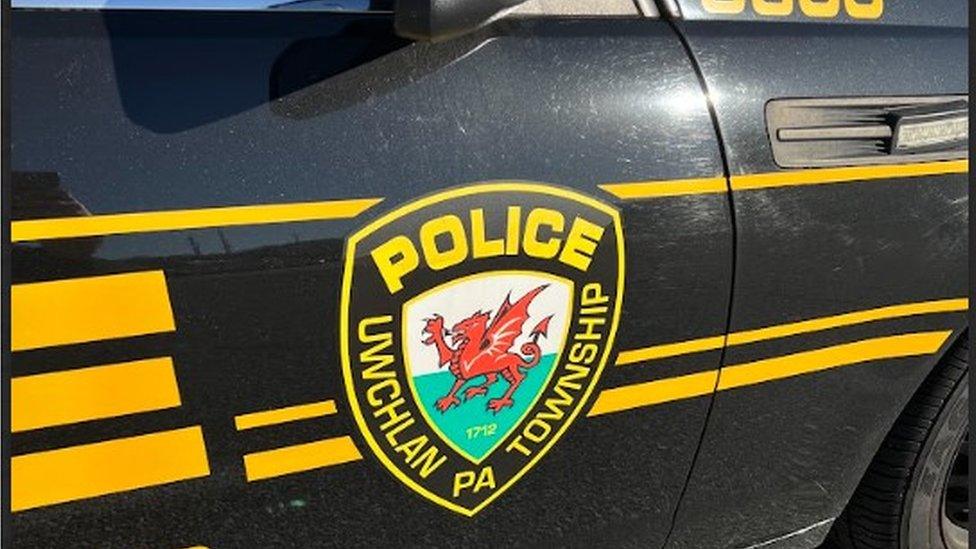
While it is unlikely you will hear Welsh on the streets of Pennsylvania, the legacy of the Welsh settlers is apparent
Hundreds of Welsh-speaking Quakers from rural parts of Wales began arriving in the late 1660s, after facing persecution in Great Britain for their beliefs, Mr Duffy said.
He added: "William Penn, founder of Pennsylvania, converted to Quakerism at a young age and was a strong advocate of religious freedom and democratic values.
"The king granted him a massive tract of land in North America to settle a debt with the Penn family.
"Believe it or not, Penn's first idea for a name for this land was 'New Wales', but King Charles II overruled him and the name Pennsylvania or 'Penn's Woods' was chosen to honour Penn's father, whom the king owed a debt to."
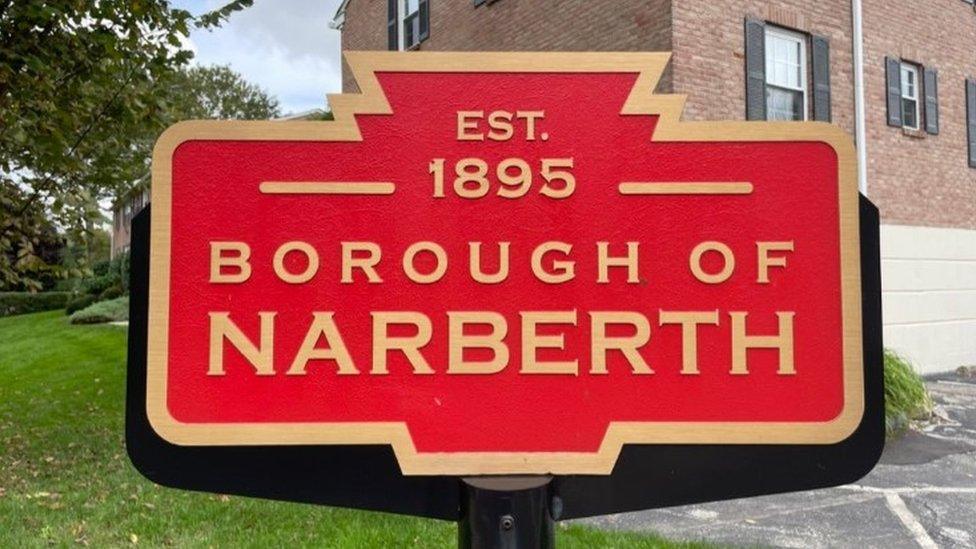
When suburban Philadelphia was being created in the late 1800s, Welsh names were seen as a sign of affluence
The Welsh Quakers believed an agreement was reached to create a "Welsh Tract" on 40,000 acres (160sq km), where the language of government, law, business and daily life would be Welsh.
But Mr Duffy said this failed to happen, adding: "The Welsh came to know Penn as 'Diwyneb', or 'Faceless' for reneging on their agreement."
However, the settlers left their mark.
In the 1880s, when the Pennsylvania Railroad was built, laying the foundations for suburban Philadelphia, it ran through what was the Welsh Tract.
Giving new areas Welsh names was seen as a sign of affluence by the wealthy residents who moved in.
Many were named by the president of the railroad - George Brooke Roberts, a direct descendant of one of the first Welsh settlers in the 1680s.
He lived at his ancestor's estate "Pencoyd" and raised funds to build the Church of St Asaph, Bala Cynwyd.
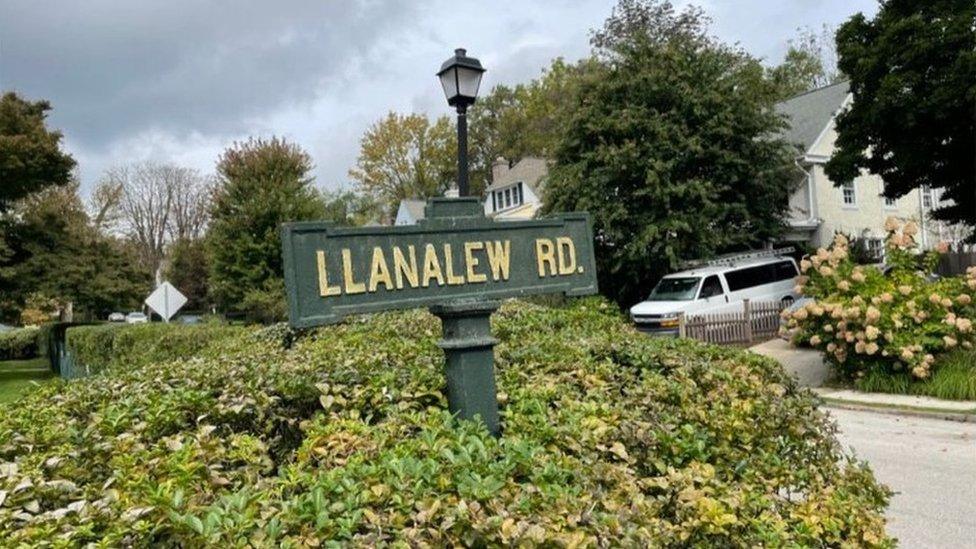
Affluent suburbs often have Welsh-influenced names for streets
Even now, new developments occasionally nod to the settlers - including Llewelyn Road, Cymry Drive, Llanelly Lane and Derwydd Lane.
Mr Duffy, 24, said DNA tests showed he had "at least a few percentage points of Welsh".
His passion for Wales was stirred further when he met boyfriend Mathew Rhys, 25, from Llanelli, Carmarthenshire, in 2019.
The couple live in Swansea, where Mr Duffy is studying history.
He said Welsh heritage is still strong in the Lower Merion Historical Society, external and Welsh Society of Philadelphia, external - the oldest ethnic society of its kind in the USA.
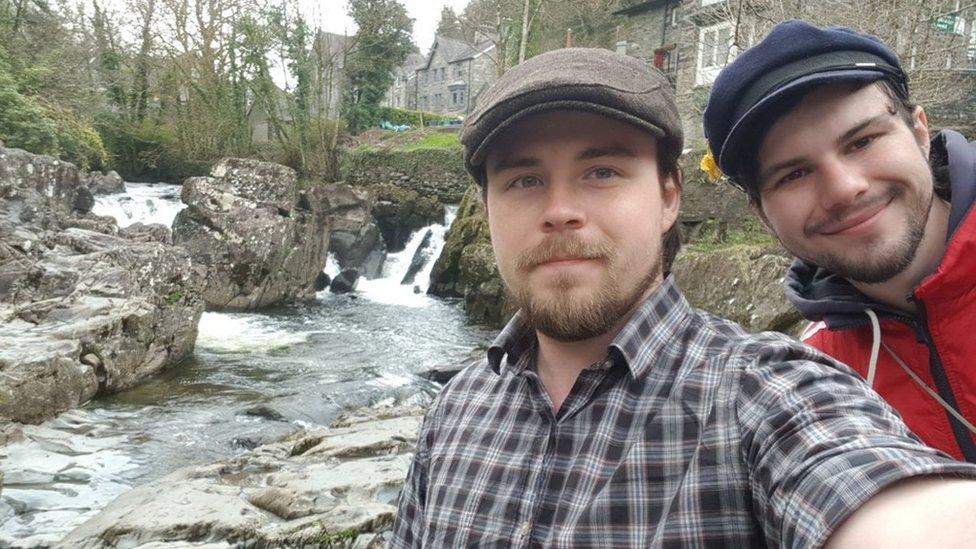
Pictured in Betws y Coed, Conwy, Mathew Rhys and Connor Duffy have been celebrating the huge influence of Wales on Pennsylvania
However, he added: "Unfortunately, in my experience, many people in the area don't know the fascinating story of their past or how their towns came to have such unique names.
"I believe it's possible to ignite an interest among the population and inspire people to learn more about and celebrate the history of the Welsh settlers whose legacy firmly remains in the names of the places around them."
Mr Duffy is doing his bit.
He organised Mari Lwyd events in Philadelphia in 2021 and New Jersey in 2022, handing out pamphlets to explain the Welsh tradition.
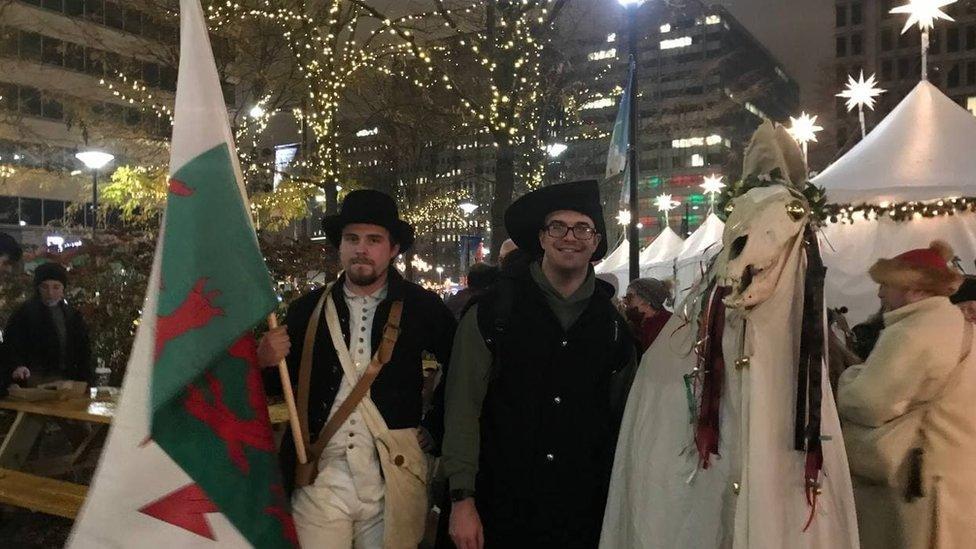
The Welsh Mari Lwyd tradition took to the streets of Philadelphia in 2021, and Mathew and Connor plan to do the same this year
Pennsylvania has "two layers of Welshness in two parts", according to Cardiff University's head of Welsh Dylan Foster Evans.
After the Quakers' idea of a Welsh colony came to nothing by the end of the 1600s, he said Welsh largely disappeared from families within two generations.
However, the first Welsh language book to be published in the USA was in Philadelphia in 1721 and there were Anglican clergymen conducting services in Welsh in the early part of the 18th Century.
A legacy would continue, though, because the settlers were seen as "founding fathers of the area by many", Dr Foster Evans believes.
As they were there so early in the foundation of the state, he also thinks there are a large number of descendants now.

A huge wave of immigration from Wales happened in the late 1800s, with those from mining areas taking their experience, and towns being named after their roots
However, their numbers were dwarfed by those of Welsh settlers that arrived during a second wave of immigration in the late 19th Century.
During the industrial revolution, they brought their mining experience to the coal-rich regions.
In total, about 80,000 Welsh people headed over - with 5,000 in the town of Scranton, where the US edition of The Office was later set, by the start of the 20th Century.
"My family were quarrymen from the Nantlle Valley in Caernarfonshire, but got good jobs in the mines because of their experience, as foremen and safety officers," Dr Foster Evans said.
"My great-grandfather, his brother and two sisters went over. The others stayed but my great-grandfather came back - which is why I'm here."
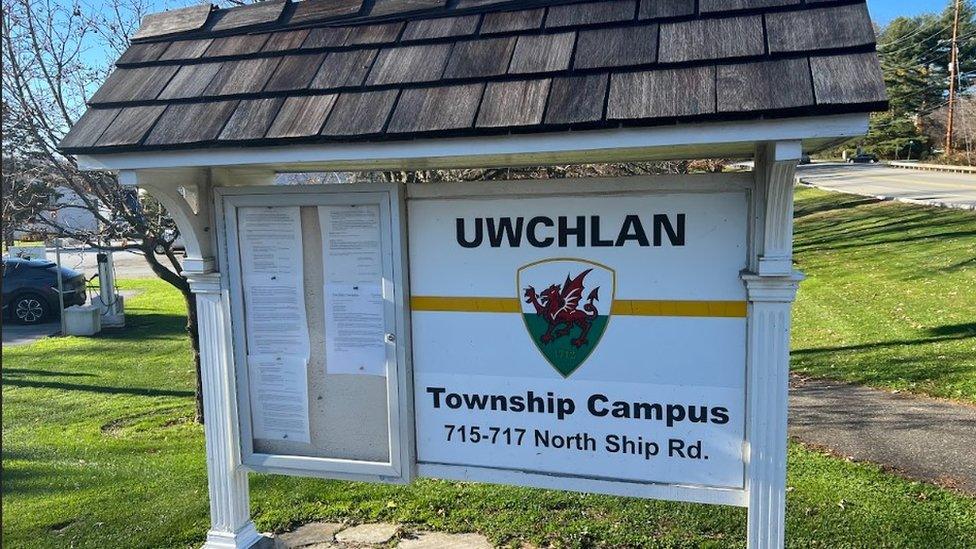
Many towns adopted the red dragon as an emblem
There were Welsh chapels, books, newspapers, while popular folk song Moliannwn (Let's Give Praise) was written in the USA.
Dr Foster Evans said in some cases, second and third generations were speaking Welsh having never been to Wales, and it was spoken into the middle of the 20th Century
He added: "Even now, there are some people with something of the language, but there were no structures to keep it alive.
"America was a melting pot of cultures, with no place for it in schools. It was only in the home and chapels where it was kept going."
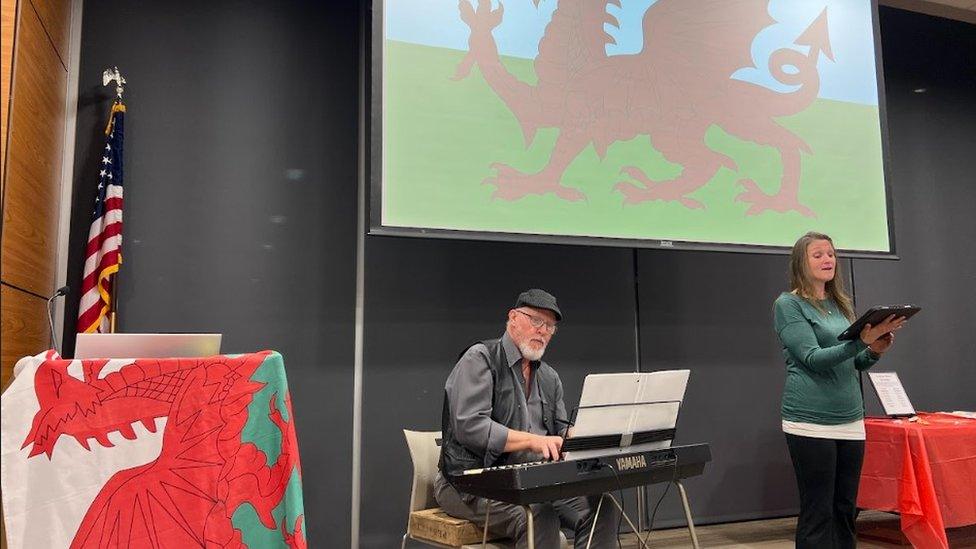
Following one of Mr Duffy's presentations in Philadelphia, musicians Keith Trievel and Katherine Crusi performed Welsh folk music
As Philadelphia was "a major destination" for immigrants from Europe, locals are used to place names from many cultures, according to Kate Jiggins.
But the president of the Lower Merion Historical Society, external said: "Nonetheless, the western suburbs retain more Welsh place names than names from any other language, and many of the residents of this area have at least some amount of Welsh heritage - myself included."
She said the Quaker religion remains prominent, with one of the oldest meeting houses in the USA "a lovely example of Welsh architecture of the early 18th Century".
Ms Jiggins added: "Last year Philadelphia had its first ever Welsh Week in the city, so it's safe to say that even though our Welsh history may not be a topic of daily conversation, it's certainly not been forgotten."
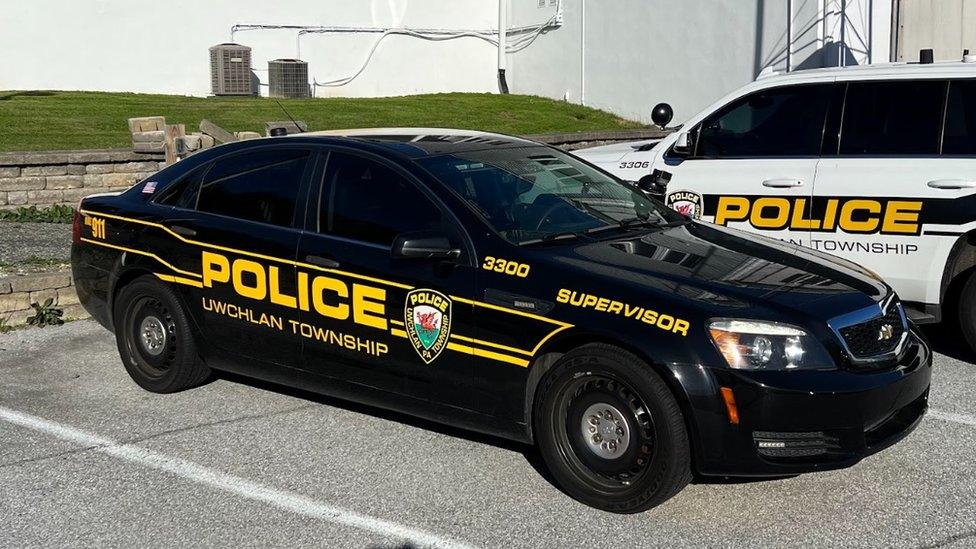
Uwchlan, Nanty Glo and Cumru are some of the townships that emerged following the arrival of Welsh settlers

THE CRASH DETECTIVES: Every serious incident on the road requires forensic examination
DEATH OF A CODEBREAKER: The man found naked & dead inside a bag

Related topics
- Published26 June 2023

- Published15 November 2022

- Published2 May 2023
